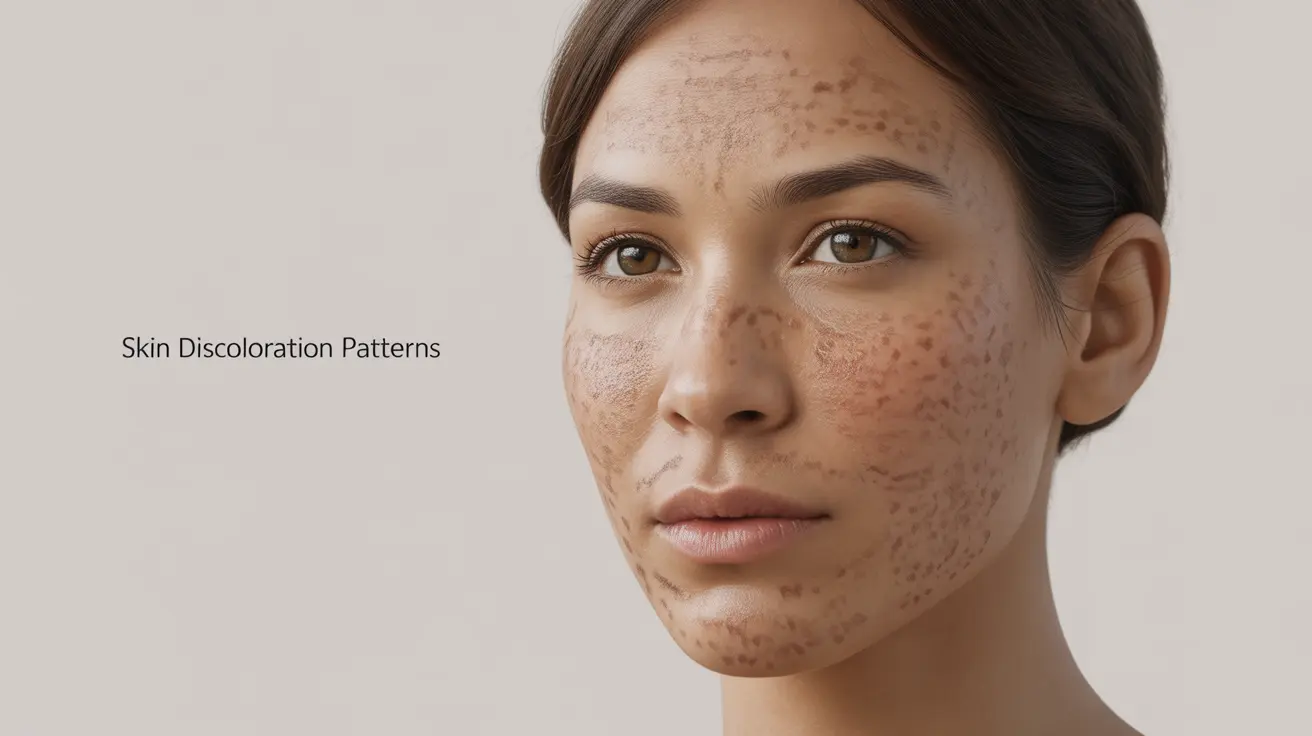Skin discoloration affects millions of people worldwide and can manifest in various ways, from small patches to larger areas of uneven skin tone. These changes in skin color can be concerning, but understanding their causes and available treatments is the first step toward effective management.
Whether you're experiencing hyperpigmentation, vitiligo, or other forms of skin discoloration, this comprehensive guide will help you identify potential causes, know when to seek medical attention, and explore treatment options for achieving more even skin tone.
Common Types and Causes of Skin Discoloration
Skin discoloration can occur for numerous reasons, ranging from harmless to more serious conditions that require medical attention. Here are the most common causes:
Sun Damage (Photodamage)
Excessive sun exposure often leads to dark spots, age spots, and uneven pigmentation. This occurs when UV rays trigger increased melanin production in certain areas of the skin, resulting in darker patches known as solar lentigines.
Melasma
This condition appears as brown or grayish patches, typically on the face. Hormonal changes, pregnancy, and birth control pills are common triggers. Women are more frequently affected than men, particularly during pregnancy when it's known as the "mask of pregnancy."
Post-Inflammatory Hyperpigmentation
This type of discoloration occurs after skin injury or inflammation, such as acne, eczema, or physical trauma. The affected areas may appear darker than the surrounding skin and can persist for months.
Diagnosis and Medical Evaluation
Professional diagnosis is crucial for determining the underlying cause of skin discoloration. Dermatologists typically perform:
- Visual examination of affected areas
- Review of medical history
- Wood's lamp examination in some cases
- Skin biopsy when necessary
Early evaluation is particularly important when discoloration is accompanied by changes in texture, bleeding, or rapid growth.
Treatment Approaches
Topical Treatments
Various topical treatments can help address skin discoloration:
- Hydroquinone creams
- Kojic acid
- Vitamin C serums
- Retinoids
- Azelaic acid
Professional Procedures
More intensive treatments may include:
- Chemical peels
- Laser therapy
- Microdermabrasion
- Intense pulsed light (IPL) treatments
Prevention and Protection
Preventing skin discoloration is often easier than treating it. Key preventive measures include:
- Daily use of broad-spectrum sunscreen (SPF 30 or higher)
- Wearing protective clothing and hats
- Avoiding peak sun hours (10 am to 4 pm)
- Regular skin examinations
Monitoring for Skin Cancer
While many forms of skin discoloration are harmless, some changes could indicate skin cancer. Use the ABCDE rule to monitor moles:
- Asymmetry
- Border irregularity
- Color variation
- Diameter larger than 6mm
- Evolving size, shape, or color
Frequently Asked Questions
What are the most common causes of skin discoloration and how can I identify them?
The most common causes include sun damage, melasma, post-inflammatory hyperpigmentation, and hormonal changes. Each type has distinct characteristics: sun damage appears as brown spots, melasma shows up as larger patches typically on the face, and post-inflammatory hyperpigmentation occurs where skin has been injured or inflamed.
How is skin discoloration diagnosed and when should I see a doctor for evaluation?
Skin discoloration is diagnosed through visual examination, medical history review, and sometimes special tests like Wood's lamp examination or skin biopsy. See a doctor if you notice rapid changes, irregular borders, bleeding, or if the discoloration is accompanied by other symptoms.
What treatment options are available to lighten dark patches or even out skin tone?
Treatment options range from topical medications (hydroquinone, kojic acid, retinoids) to professional procedures (chemical peels, laser therapy, microdermabrasion). The best treatment depends on the cause and severity of the discoloration.
Can sun exposure cause skin discoloration and how can it be prevented?
Yes, sun exposure is a major cause of skin discoloration. Prevention includes using broad-spectrum sunscreen daily, wearing protective clothing, avoiding peak sun hours, and seeking shade when outdoors.
How can I tell if a discolored mole or spot might be a sign of skin cancer?
Use the ABCDE rule: check for Asymmetry, Border irregularity, Color variation, Diameter larger than 6mm, and Evolution of the spot over time. Any suspicious changes should be evaluated by a healthcare provider promptly.




